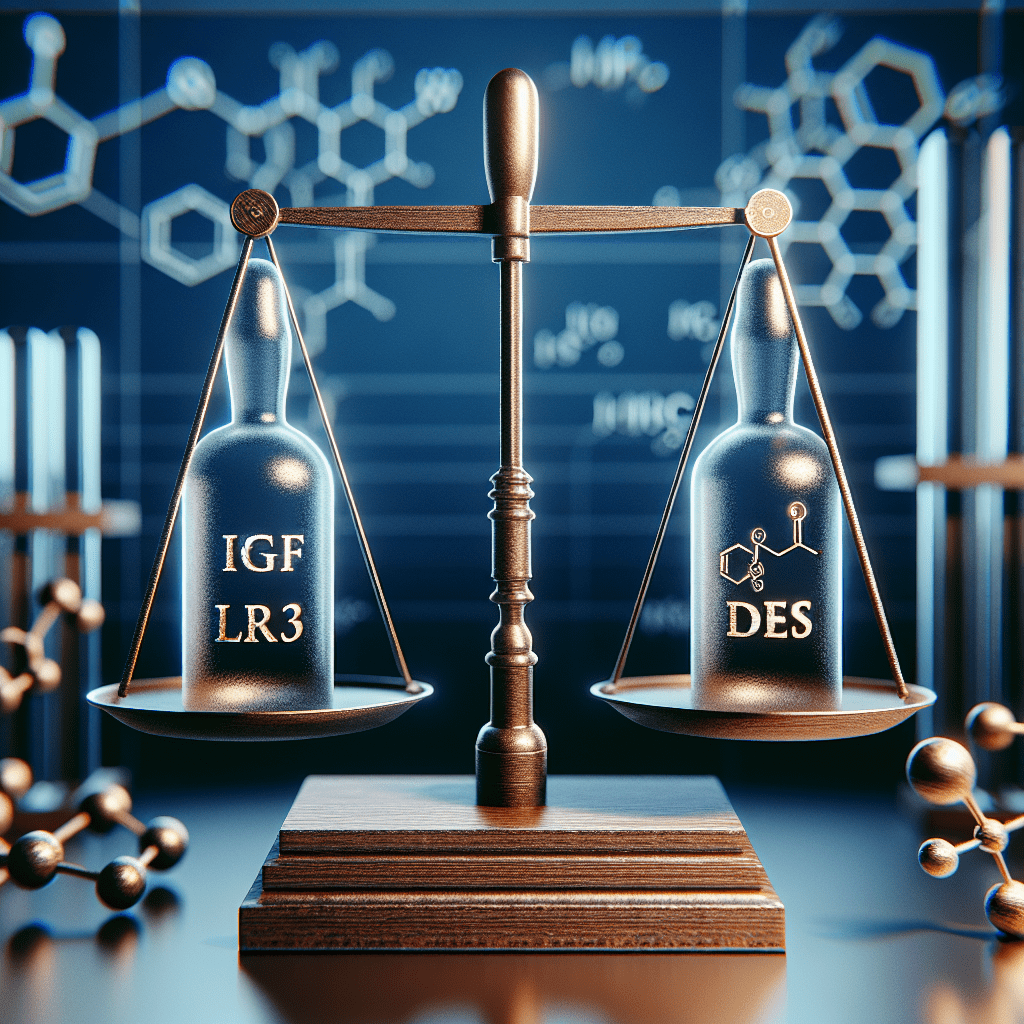
IGF LR3 VS DES

En el mundo de culturismo y mejora del rendimiento, Insulin-like Growth Factor (IGF) variants such as IGF LR3 (Long R3 IGF-1) and DES (IGF-1 DES) have garnered attention for their potential to aid in crecimiento muscular and recovery. Both compounds are synthetic analogs of human IGF-1, which plays a crucial role in muscle development by promoting cell proliferation and growth. Despite their similar roots, IGF LR3 and DES differ significantly in their properties, applications, and effects, making it crucial for enthusiasts and professionals alike to understand their distinctions.
IGF LR3 is a modified version of IGF-1, where the amino acids have been altered to extend its half-life significantly, leading to increased effectiveness. This modification allows IGF LR3 to remain active in the body for about 20-30 hours, making it a more viable option for sustained muscle growth stimulation. The extended half-life aids in enhanced nutrient delivery throughout the body, allowing for better muscle recovery and growth. Due to its prolonged activity, IGF LR3 can be administered less frequently, typically once a day, which adds convenience for users.
On the other hand, IGF-1 DES is a truncated form of IGF-1. It is designed to work locally at the site of administration due to its shorter half-life, around 20-30 minutes. This makes it more suitable for targeting specific muscle groups or areas during workouts or recovery. The potency of IGF-1 DES lies in its fast-acting nature, making it ideal for pre-exercise delivery to enhance muscle pumps and provide an anabolic environment. The shorter duration of action requires more frequent dosing, often multiple times a day, to maintain its effects.
Choosing between IGF LR3 and DES depends heavily on individual goals and training regimens. For culturistas aiming for overall growth and recovery, IGF LR3’s longer systemic activity might offer more significant benefits. Meanwhile, athletes targeting specific muscles or requiring quick recovery and enhanced local growth may find IGF-1 DES more advantageous.
However, both compounds come with potential risks and efectos secundarios, including hypoglycemia, joint pain, and organ growth, emphasizing the importance of cautious and informed usage. Additionally, the legal status of these substances varies across countries, underscoring the need for users to stay updated on regulations and considerations.
Conclusión
Both IGF LR3 and IGF-1 DES offer unique benefits in muscle development and recovery, but they cater to different needs and preferences. IGF LR3 is suitable for those seeking long-lasting, systemic effects, while IGF-1 DES is ideal for targeted, quick-action benefits. Comprender these distinctions helps users make informed decisions aligning with their fitness goals. Nonetheless, the importance of responsible usage cannot be overstated given the potential health implications and regulatory considerations involved.
Preguntas frecuentes
-
- What are the primary differences between IGF LR3 and IGF-1 DES?
IGF LR3 has a longer half-life suitable for systemic growth, while IGF-1 DES acts quickly and locally.
- What are the primary differences between IGF LR3 and IGF-1 DES?
-
- Which IGF variant is better for muscle growth?
Both variants can aid muscle growth; IGF LR3 is better for long-term growth, whereas IGF-1 DES is ideal for specific areas.
- Which IGF variant is better for muscle growth?
-
- Are there any side effects of using IGF LR3 or IGF-1 DES?
Potential side effects include hypoglycemia, joint pain, and possible organ growth.
- Are there any side effects of using IGF LR3 or IGF-1 DES?
-
- How are these compounds administered?
IGF LR3 is usually injected once daily, while IGF-1 DES requires multiple daily doses.
- How are these compounds administered?
-
- Is the use of IGF LR3 and IGF-1 DES legal?
The legality varies by country, and users must adhere to local regulations.
- Is the use of IGF LR3 and IGF-1 DES legal?
For more insights, visit aquí.
IGF LR3 (Insulin-like Growth Factor 1 Long Arg3) and IGF DES (Des(1-3)IGF-1) are both analogs of the naturally occurring Insulin-like Growth Factor 1, each with distinct modifications that enhance their biological activity and stability, making them popular in the realm of research and performance enhancement. IGF LR3 has an extended half-life due to an altered amino acid sequence, particularly the substitution of arginine for glutamic acid at the third position, along with an extension at the N-terminus. This modification not only prolongs its active period in the bloodstream but also increases its binding affinity to IGF-1 receptors, potentially leading to more pronounced anabolic effects. On the other hand, IGF DES is characterized by the absence of the first three amino acids, which enhances its affinity for receptors and makes it more potent in promoting cell growth in localized tissues. This attribute makes IGF DES particularly appealing for site-specific use, where rapid yet targeted muscle growth is desired. Despite their promising attributes, both analogs necessitate cautious application, primarily due to limited research on their long-term effects and safety in humans.















